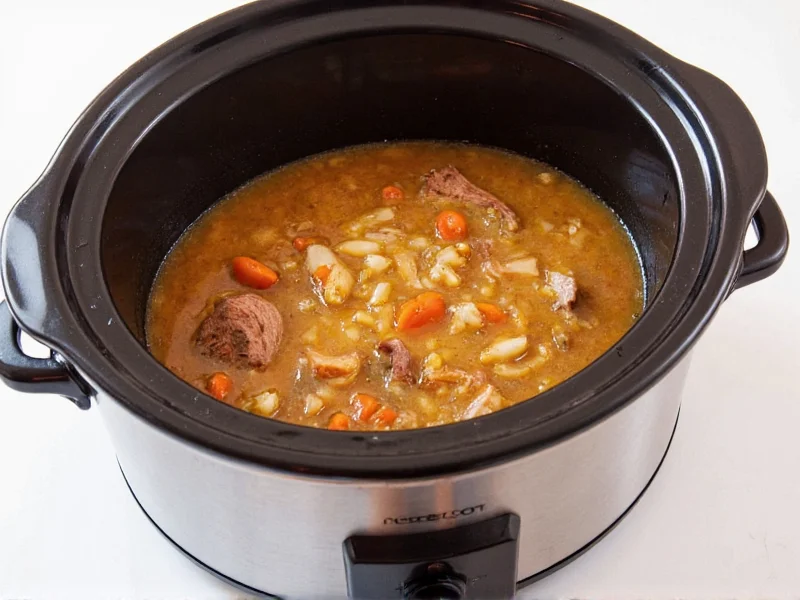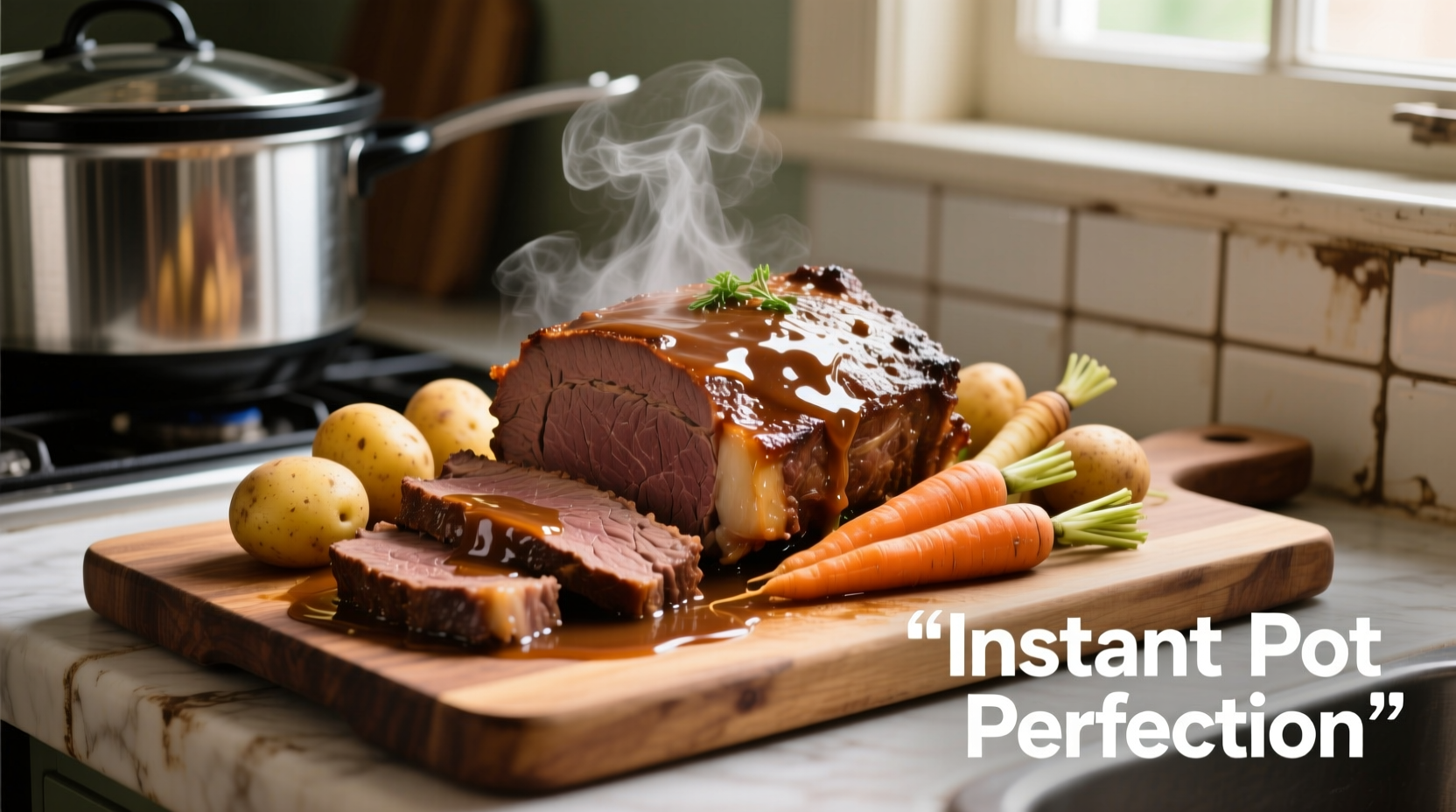Why Your Pot Roast Keeps Turning Out Tough
Many home cooks face dry, stringy pot roast because they skip searing or crank the heat too high. Boiling the meat—a common mistake—causes proteins to seize, squeezing out moisture. The real issue? Pot roast isn’t about cooking longer; it’s about how you cook. As Serious Eats emphasizes, “the key is developing deep flavor through searing before transitioning to low, slow heat.” Without this step, you’re just simmering bland, overcooked beef.
The Science Behind Perfect Pot Roast
Forget “set it and forget it.” True tenderness hinges on two phases: Maillard reaction during searing and collagen breakdown during slow cooking. Searing creates complex flavors by caramelizing surface proteins, while low temperatures (275°F–300°F) gently melt connective tissue into gelatin over 3–4 hours. Food Network’s test kitchen confirms chuck roast is ideal: its 20–30% fat marbling prevents drying, unlike lean cuts like round roast. Rushing this process—or using water instead of broth—yields rubbery results.
Step-by-Step Pot Roast Recipe for Foolproof Results
This method, refined from Serious Eats’ research, guarantees melt-in-your-mouth beef. Serves 4–6.
| Ingredient | Quantity | Why It Matters |
|---|---|---|
| Beef chuck roast | 1.5–2 lbs | High fat content stays moist during slow cooking (per Food Network) |
| Olive oil | 2 tbsp | High smoke point for effective searing without burning |
| Onion, carrots, celery | 1 each, chopped | Aromatics build flavor base; carrots add natural sweetness |
| Beef broth | 2 cups | Superior depth vs. water; use low-sodium to control salt |
| Bay leaf | 1 | Earthy note that complements slow-cooked beef |

- Sear the meat: Pat chuck roast dry. Heat oil in Dutch oven until shimmering. Sear all sides 3–4 minutes until deeply browned. Remove meat.
- Sauté aromatics: Add onion, carrots, and celery. Cook 5 minutes until softened. Add garlic; cook 1 minute.
- Slow-cook: Return meat to pot. Add broth and bay leaf. Cover, reduce heat to low. Simmer 3–4 hours until fork-tender. Never boil—maintain gentle bubbles.
- Rest and serve: Remove meat; tent with foil 15 minutes. Skim fat from broth. Slice beef against the grain.
Cooking Method Comparison: Which Approach Wins?
Choose based on your timeline and equipment. Data sourced from Food Network’s recipe testing:
| Method | Time Required | Tenderness | When to Use | When to Avoid |
|---|---|---|---|---|
| Oven (Dutch oven) | 3–4 hours | ★★★★★ | Weekend cooking; precise temperature control | If oven unavailable or short on time |
| Slow cooker | 6–8 hours | ★★★★☆ | Hands-off meal prep; busy days | Avoid if liquid evaporates (add 25% less broth) |
| Instant Pot | 1 hour + natural release | ★★★☆☆ | Urgent meals; modern kitchens | Not for first-timers—risk of rubbery texture |

When Pot Roast Shines (and When to Skip It)
Use pot roast for: Family dinners, meal prep (leftovers improve next day), or when showcasing affordable cuts. Its rich broth doubles as gravy. Avoid pot roast if: You’re short on 3+ hours, lack a heavy pot (thin pans cause scorching), or need lean protein—chuck roast’s fat is non-negotiable for tenderness. As culinary experts note, “substituting sirloin guarantees disappointment” (Serious Eats).
Pro Tips for Consistent Success
- Quality check: Select chuck roast with even marbling—avoid grayish meat or excess liquid in packaging (sign of poor storage).
- Salt timing: Season meat 1 hour pre-searing; salt draws out moisture, ensuring better browning.
- Liquid level: Broth should cover 1/3 of meat—too much dilutes flavor, too little causes drying.
5 Costly Mistakes Even Experienced Cooks Make
- Skipping the sear: Results in bland, gray meat. Always sear in batches to avoid steaming.
- Boiling instead of simmering: Aggressive bubbles toughen fibers. Maintain 180°F–200°F.
- Cutting against grain too late: Rest meat 15 minutes; slicing early releases juices.
- Using lean cuts: Round or sirloin lacks fat, becoming dry. Chuck is non-negotiable.
- Overloading veggies: Excess carrots/onions break down, making broth muddy.
Everything You Need to Know
Searing triggers the Maillard reaction, creating complex flavor compounds that simmering alone can’t achieve. As Serious Eats confirms, unseared pot roast tastes flat and boiled, while properly seared meat develops a rich, savory crust essential for depth.
Avoid lean cuts like sirloin or round roast—they lack marbling and will dry out. If chuck isn’t available, Food Network recommends blade roast as a backup, but expect slightly less tenderness. Never substitute with filet mignon or other premium steaks.
Cool leftovers within 2 hours. Store in airtight containers for up to 4 days in the fridge or 3 months frozen. Reheat gently in a covered dish at 300°F with 2 tbsp broth to restore moisture—microwaving makes meat rubbery. USDA food safety guidelines require reheating to 165°F internal temperature.
When made with chuck roast, pot roast provides high-quality protein and iron. Trim visible fat pre-cooking to reduce saturated fat. The broth-based cooking method avoids excess oil. Registered dietitians note it’s nutrient-dense but calorie-rich—serve with roasted vegetables for balance. Avoid store-bought onion soup mixes due to high sodium.
Overcooked pot roast shreds excessively when probed—it should yield to fork pressure but hold shape. If the broth turns greasy and the meat feels dry despite sufficient liquid, heat was too high. Serious Eats’ tests show exceeding 200°F internal temperature guarantees toughness, even with long cook times.










 浙公网安备
33010002000092号
浙公网安备
33010002000092号 浙B2-20120091-4
浙B2-20120091-4